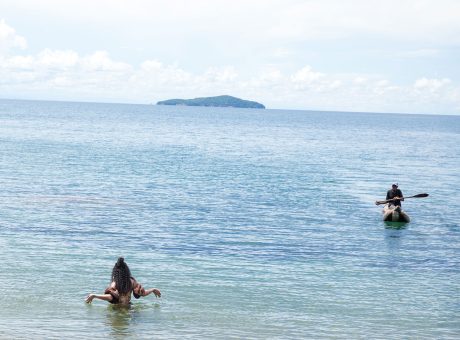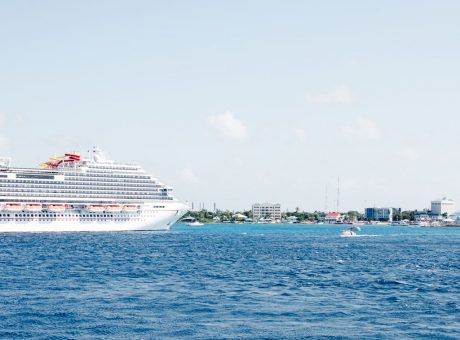
MUST-SEE MALTA VILLAGES OF SLIEMA & ST. JULIAN’S
Malta villages of Sliema and St. Julian’s must be on your travel plan when you visit the Island of Malta. Whether you’re a water enthusiast, an art lover, a history buff or just want to take it all in, you’ll find a beautiful microcosm of Maltese culture in both of these villages, which also happen to be located adjacent to one another.

St. Julian’s
St. Julian’s village is named after the town’s patron saint Saint Julian’s, and before that, it was a sleepy fishing village with only a few insignificant buildings like the old parish church, the Spinola Palace, and some farm houses and fishermen’s huts.
This is one of the smallest villages in Malta with just 8000 inhabitants and yet it boasts some of the island’s most raucous celebrations and festivals, including the annual summer festa.
The interesting thing is that this village was not always as tiny as it is now. In fact, there is evidence to show that the Romans inhabited it during the 20th century, specifically on the site where the Chapel of the Sacred Heart Convent is situated.
Where to Go in St. Julian’s
Standing out among all of the village’s attractions is the Portomaso Tower, a 98-meter structure that overlooks the surrounding landscape.
St. Julian not only boasts one of Malta’s few sandy beaches, but it’s also known as Malta’s party capital, thanks to having a plethora of lively bars and clubs to dance the night away. The restaurants here are also quite good and offer a healthy mix of local and international cuisine.
Some of the most notable beaches to explore when you’re in St Julian’s include Spinola Bay, which is known as one of the most picturesque beaches in the whole of Malta. Then there’s Balluta Bay which is flanked by immaculate art-nouveau buildings, and it’s where couples go to enjoy romantic “love” boat rides that cruise around the bay to take in the dreamy Mediterranean sunset.
And of course, there’s St. George’s Bay which has to be one of Malta’s most popular beaches to both locals and tourists. Here you’ll find beautiful soft sand, shimmering azure blue water that is so pleasant that it’s even warm in the winter, plus it’s one of the few beaches in Malta that has plenty of amenities including restaurants, hotels, pubs and even a sun lounger hiring service.
Lastly, take home a few souvenirs by shopping in the posh Portomaso area which has plenty of luxury boutiques and swanky restaurants that overlook a beautiful yacht marina.

Sliema
The village of Sliema has gone through many different transitions over the centuries. Located in the northeastern region of Malta, this former fishing village was also once the home of Maltese aristocracy, whose architectural genius is still reflected in some of the churches. However, a majority of the older buildings are built with Victorian-style architecture from the era of British occupation, which is just another chapter in the long and lustrous history of this extraordinary town.
Nowadays it’s streets are lined with stylish townhouses and villas, alongside eateries, bars, pubs and a multitude of shops. Although it’s a bustling commercial hub, you still feel connected to nature because Sliema is, after all, a coastal town and everywhere you go, you’ll be able to enjoy views of the sea, as well as the landscape of Valletta or St. Julians.
Often the best place to enjoy these views is from the town’s legendary promenade which seems to stretch forever and features benches so that you can catch a sunset after a long day of sightseeing. This is a popular spot for locals, who can often be seen taking long walks, jogging or even chatting and socializing on the promenade at the end of the day.
Did you know? Sliema is actually the first tourist resort to have been built in Malta and was a favorite summer getaway for wealthy families in neighboring Valletta. This is not surprising when you consider the fact that it offers the best of both worlds with beautiful sea and landscapes, Sliema’s Independence Garden, undoubtedly, being the jewel of this beautiful scenery.
A lot of Maltese locals still refer to the village as Tas-Sliema, which is the actual traditional form of the word in the Maltese language.
Where to Go in Sliema
If you want to see what the local art scene is like, be sure to check out the Christine X Art Gallery, where you’ll find works from emerging and established artists, including figurative works, audacious abstracts, and beautiful landscapes. Also, located in Sliema is Tigne Point, a bustling mini-metropolis where you’ll find an eclectic mix of shops, trendy apartments, sleek office spaces and Malta’s biggest shopping mall, The Point.
The beautifully restored Salesian Theatre regularly hosts live music shows, intimate plays, and contemporary art exhibitions, which is why it is considered to be the cultural center of the place.
Now, the Seaside Promenade Walk is where you go if you want to experience uninterrupted views of the Mediterranean sea in all its glory. You can either catch its legendary sunsets sitting on one of the benches or sipping sundowners at the Il-Fortizza restaurants, and there are plenty of ice cream parlors in the area to cool off from sunbathing.
How to Get Around Sliema
When in Sliema, be sure to take the Valletta Ferry to get around because it is by far the most efficient and affordable form of transportation around the village.
Text and pictures by Ed Lansink of maltauncovered.com



